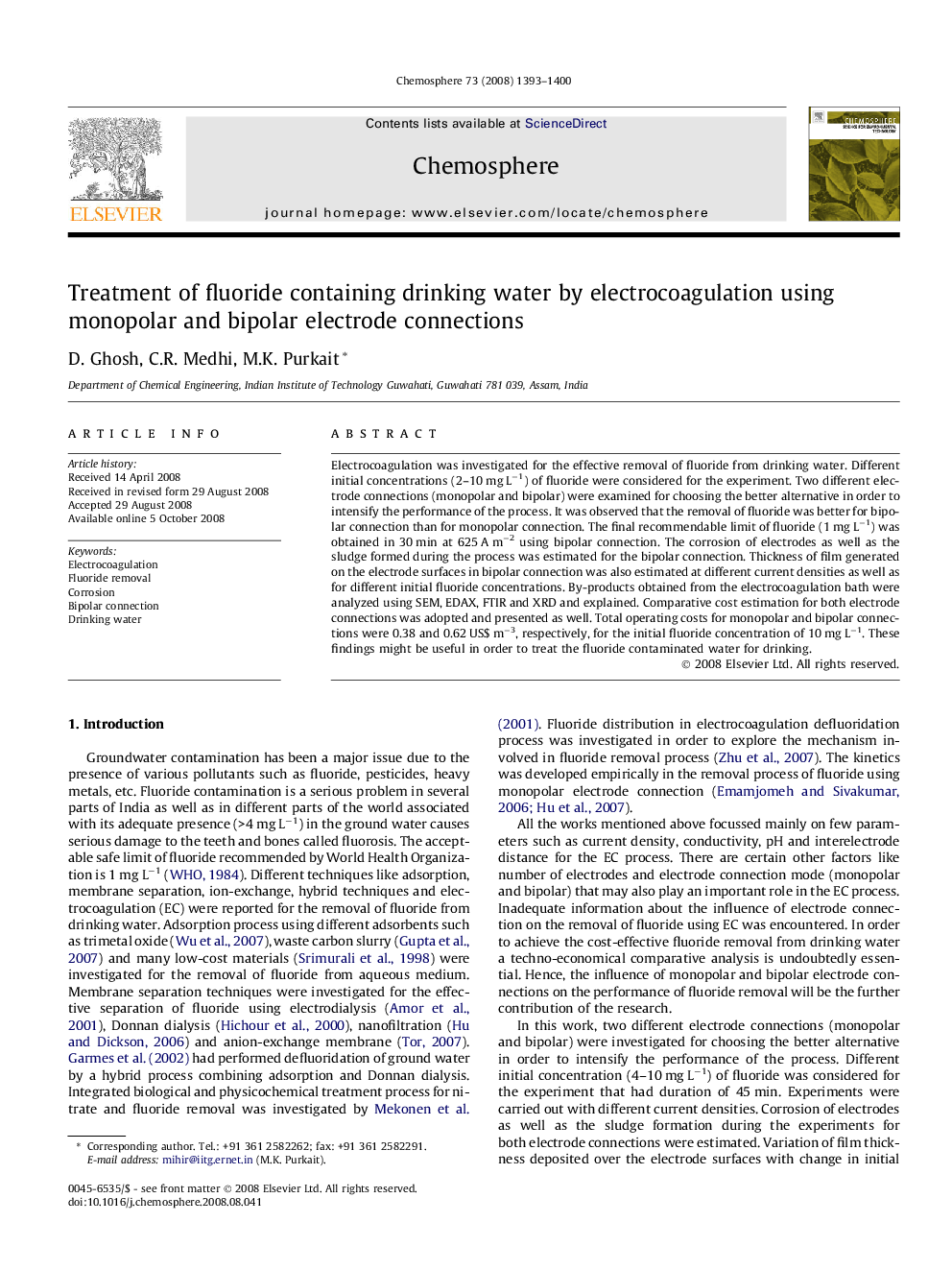| Article ID | Journal | Published Year | Pages | File Type |
|---|---|---|---|---|
| 4412886 | Chemosphere | 2008 | 8 Pages |
Electrocoagulation was investigated for the effective removal of fluoride from drinking water. Different initial concentrations (2–10 mg L−1) of fluoride were considered for the experiment. Two different electrode connections (monopolar and bipolar) were examined for choosing the better alternative in order to intensify the performance of the process. It was observed that the removal of fluoride was better for bipolar connection than for monopolar connection. The final recommendable limit of fluoride (1 mg L−1) was obtained in 30 min at 625 A m−2 using bipolar connection. The corrosion of electrodes as well as the sludge formed during the process was estimated for the bipolar connection. Thickness of film generated on the electrode surfaces in bipolar connection was also estimated at different current densities as well as for different initial fluoride concentrations. By-products obtained from the electrocoagulation bath were analyzed using SEM, EDAX, FTIR and XRD and explained. Comparative cost estimation for both electrode connections was adopted and presented as well. Total operating costs for monopolar and bipolar connections were 0.38 and 0.62 US$ m−3, respectively, for the initial fluoride concentration of 10 mg L−1. These findings might be useful in order to treat the fluoride contaminated water for drinking.
